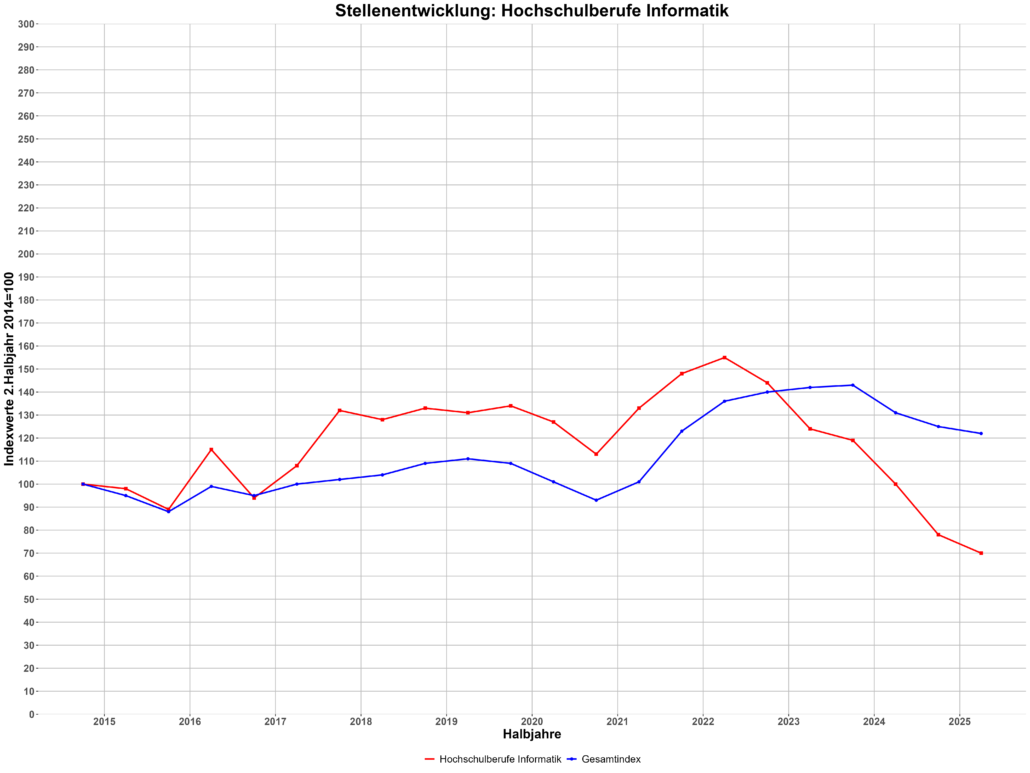Between 2020 and 2022, IT professionals were in high demand as lockdowns forced companies to digitize overnight: job offers for software developers, IT architects and data analysts surged. Since mid-2022, however, the tide has turned. Open IT positions have fallen to less than half their pandemic peak—and are now even below 2014/15 levels. In Switzerland, tertiary-education IT roles saw a 31% drop in postings in the first half of 2025 versus the previous year.
“Automation and AI are constantly reshaping ICT job requirements,”
notes Johanna Bolli-Kemper from Stellenmarkt-Monitor Switzerland. In 2023 alone, 34% of Swiss companies were already using AI. This technology, combined with cloud solutions and IT outsourcing, has reduced the need for in-house programming, network and database specialists.
Germany reflects the same shift: in 2024, 43,000 ICT experts were unemployed—17,000 with academic degrees—marking a 30% year-on-year increase for software developers and analysts. And a new Stanford University U.S. study shows this is not just a European phenomenon. In the U.S., AI is slashing jobs, with 22- to 25-year-old IT graduates hit hardest: their employment rate has dropped nearly 20% since ChatGPT’s release.
“It used to be the land of milk and honey, where students had considerable choice,”
says Paul Glanting of San Francisco State University in an interview with The San Francisco Standard. High salaries and guaranteed offers for computer science graduates are no longer the norm. There’s also a growing divide inside the tech workforce itself. Routine coding and maintenance roles are increasingly automated, while high-skill positions that require human expertise in AI evaluation, human–AI collaboration, and the adoption of AI across new industries—from healthcare and manufacturing to financial security—are expanding.
“Whether the current decline in IT jobs is just a temporary phase or indicates a structural change remains open”,
says Johanna Bolli-Kemper from Stellenmarkt-Monitor Switzerland, noting that the figures could also reflect a post-pandemic market corrections after years of over-hiring.



